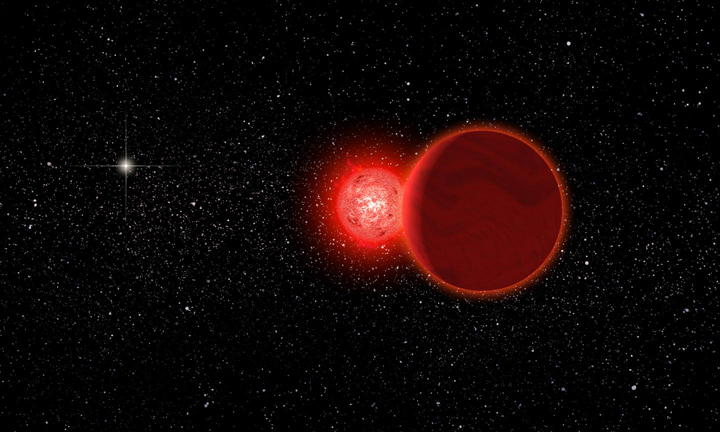TORONTO – A new paper has concluded that a small star once buzzed through the Oort Cloud in our outer solar system.

Okay, so “buzzed” is all relative. For astronomers, a pass of 0.8 light years — or about 8 trillion kilometres — is buzzing. And that’s just how close this star came to our outer solar system.
(To put things into perspective, the nearest star to Earth (aside from the sun, of course) is Proxima Centauri, which lies 4.2 light years away. So, relatively speaking, this was a buzzing.)
READ MORE: NASA’s New Horizon spacecraft releases new images of Pluto
Eric Mamajek from the University of Rochester and Valentin D. Ivanov, from the European Southern Observatory, became intrigued by this star shortly after its discovery in 2013 by Ralf-Dieter Scholz.
The astronomers calculated that 70,000 years ago, the star passed about 52,000 astronomical units (one astronomical unit is the distance from the sun to Earth, roughly 150,000,000 km) from our solar system.
How sure are the astronomers of their calculations? In their paper published in the Astrophysical Journal Letters, they say they are 98 per cent certain.
Simulations of the stellar interloper’s orbit, nicknamed Scholz’s Star, calculated that it passed through the Oort Cloud, a region at the outer edge of the solar system that is filled with icy debris, which produces many of the comets we see.
Scholz’s Star is part of a binary system, where two stars orbit one another. It is a brown dwarf, often called a “failed star” as it does not fuse hydrogen in its core. It’s companion is a small red dwarf, with a mass of about eight per cent of the sun.
READ MORE: Europe’s Rosetta craft swoops in close to comet it’s been chasing
The astronomers were interested in the star’s movement. It showed very slow tangential motion, or movement across the sky.
“Most stars this nearby show much larger tangential motion,” said Mamajek. “The small tangential motion and proximity initially indicated that the star was most likely either moving towards a future close encounter with the solar system, or it had ‘recently’ come close to the solar system and was moving away.”
When they looked at its radial velocity (its movement from Earth) they calculated that it was moving very quickly almost directly away from Earth.


Comments